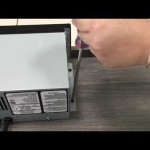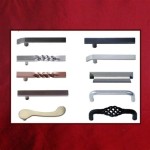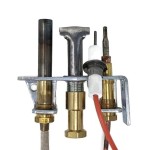Gas Fireplace Won't Light With Switch: Troubleshooting and Solutions
A gas fireplace offers both aesthetic appeal and functional warmth to a home, particularly during colder months. Its convenience lies in its ease of operation, often involving a simple wall switch or remote control. However, encountering a situation where the gas fireplace won't light with the switch can be frustrating. This article provides a comprehensive guide to diagnosing potential causes and outlining possible solutions for this common problem. Examining the components involved, from the gas supply to the ignition system, is crucial for effective troubleshooting.
Understanding the basic principles of how a gas fireplace operates is beneficial before delving into specific troubleshooting steps. A typical gas fireplace system consists of several key components working in concert. The gas supply, whether natural gas or propane, feeds into the fireplace through a gas line. A control valve regulates the flow of gas into the burner assembly. The ignition system, which can be either a pilot light system or an electronic ignition system, initiates the combustion process. A switch or remote control initiates the entire sequence, signaling the control valve to open and the ignition system to activate. Problems within any of these components can prevent the fireplace from lighting.
Checking the Gas Supply
The first and simplest step when a gas fireplace won't light is to verify the gas supply. A common oversight is a closed gas valve. Locate the main gas shut-off valve that supplies gas to the fireplace. This valve is typically located near the fireplace itself or outside the house where the gas line enters. Ensure that the valve is fully open. The valve handle should be parallel to the gas pipe when open and perpendicular when closed. Sometimes, sediment or debris can accumulate in the gas line, partially obstructing the flow. If the valve has been closed for an extended period or if recent work was done on the gas line, air may have entered the system. This air needs to be purged before the fireplace can operate correctly.
If the gas pressure is too low, the fireplace may struggle to light or may light intermittently. A qualified gas technician can measure the gas pressure using a manometer to ensure it is within the specified range for the fireplace unit. Low gas pressure can be caused by several factors, including issues with the gas regulator or high gas demand from other appliances running simultaneously. If other gas appliances are experiencing similar problems, a wider issue with the gas supply to the house should be suspected.
Another potential issue related to the gas supply is the flexible gas line connecting the fireplace to the main gas line. These flexible lines can sometimes become kinked or damaged, restricting gas flow. Visually inspect the flexible gas line for any signs of damage or kinking. If any damage is found, the flexible line needs to be replaced by a qualified technician.
Examining the Ignition System
Once the gas supply is confirmed, the next step is to examine the ignition system. The type of ignition system dictates the troubleshooting approach. Gas fireplaces typically employ one of two ignition systems: a standing pilot light system or an electronic ignition system. A standing pilot light system has a small, constantly burning flame that ignites the main burner when the switch is activated. An electronic ignition system uses a spark igniter or hot surface igniter to ignite the gas. Each system has its own set of potential problems.
For fireplaces with a standing pilot light, the pilot light itself may have gone out. This can be caused by a draft, a dirty pilot light assembly, or a faulty thermocouple. To relight the pilot light, follow the manufacturer's instructions. Typically, this involves turning the gas control knob to the "Pilot" position, pressing and holding the knob down to allow gas to flow to the pilot light, and then using a push-button igniter or a long lighter to ignite the pilot flame. Continue holding the knob down for about 30 seconds after the pilot light ignites to allow the thermocouple to heat up. If the pilot light goes out when the knob is released, the thermocouple may be faulty and need replacement.
The thermocouple is a safety device that senses the heat from the pilot light. If the thermocouple does not sense heat, it shuts off the gas supply to the pilot light, preventing gas from accumulating and creating a potential hazard. A faulty thermocouple is a common reason why a pilot light won't stay lit. A technician can test the thermocouple using a multimeter to determine if it is generating sufficient voltage. If not, it needs to be replaced. The pilot light assembly itself can also become clogged with dust, soot, or debris, which can interfere with the pilot flame and prevent the thermocouple from heating correctly. Cleaning the pilot light assembly with a small brush and vacuum can often resolve this issue.
For fireplaces with an electronic ignition system, the igniter may be failing to produce a spark or the hot surface igniter may not be heating up sufficiently. Listen for a clicking sound when the switch is activated. This indicates that the spark igniter is attempting to ignite the gas. If no clicking sound is heard, the igniter module may be faulty, or there may be a problem with the wiring. A visual inspection of the wiring connections is essential. Look for loose connections, corroded terminals, or damaged wires. Clean and tighten any loose connections. If the wiring appears to be in good condition, the igniter module may need to be replaced.
Hot surface igniters glow orange when they heat up sufficiently to ignite the gas. If the hot surface igniter is not glowing, it may be faulty. A technician can test the igniter using a multimeter to determine if it is receiving power. If it is receiving power but not heating up, the igniter needs to be replaced. These igniters are fragile and can be easily damaged, so careful handling is required during replacement.
Addressing Switch and Wiring Issues
The wall switch or remote control that operates the gas fireplace also needs to be considered as a potential source of the problem. A faulty switch or loose wiring connections can prevent the fireplace from lighting. Testing the switch's functionality is crucial. A multimeter can be used to check the continuity of the switch. When the switch is in the "on" position, the multimeter should indicate continuity, meaning that the circuit is complete. If there is no continuity, the switch is faulty and needs to be replaced. Ensure that the replacement switch is compatible with the fireplace model.
Inspect the wiring connections to the switch and to the fireplace control module. Loose or corroded connections can interrupt the electrical signal and prevent the fireplace from lighting. Tighten any loose connections and clean any corroded terminals. If the wiring is damaged, it needs to be repaired or replaced. Pay particular attention to the wiring that connects the switch to the fireplace control module, as this is a common point of failure.
In some cases, the problem may lie within the fireplace control module itself. This module is responsible for managing the various functions of the fireplace, including the ignition system and the gas valve. If the control module is faulty, it may not be sending the correct signals to these components. Diagnosing a faulty control module typically requires specialized knowledge and equipment. Therefore, it is often best to consult with a qualified technician to diagnose and replace the control module.
Furthermore, thermostat settings and wiring should be examined. Some gas fireplaces incorporate a thermostat that regulates the flame height or turns the fireplace on and off based on room temperature. If the thermostat is set too low or is malfunctioning, it can prevent the fireplace from lighting, even when the switch is engaged. Ensuring the thermostat is set to a reasonable temperature and is functioning correctly is necessary. Also, wiring related to the thermostat can suffer the same issues as listed before, such as loose, corroded, or damaged elements.
By systematically checking the gas supply, ignition system, switch, wiring, and other components, it is often possible to identify the cause of a gas fireplace that won't light with the switch. However, working with gas appliances can be dangerous, so it is always best to consult with a qualified technician if you are not comfortable performing these troubleshooting steps yourself. A professional technician has the knowledge, experience, and equipment to safely diagnose and repair gas fireplace problems.

Gas Fireplace Main Burner Won T Light
My Gas Fireplace Pilot Light Works Perfectly However When I Flip The Switch For Rest Of To Turn On Nothing Happens What Quora

Gas Fireplace Main Burner Won T Light

Why Your Gas Fireplace Won T Light And How To Fix It

Gas Fireplace Keeps Shutting Off Here S What You Can Do

Gas Fireplace Won T Stay Lit Magic Touch Mechanical
I Have A Gas Fireplace With An Electric Start Sometimes When Flip The Light Switch Doesn T Lite It S On Goes Off For No Appa Reason What

The Main Burner Flame Will Not Come On Or Stay Www Mygasfireplacerepair Com

Gas Fireplace Keeps Shutting Off Here S What You Can Do

Reasons Your Gas Fireplace Isn T Working Experts
Related Posts








